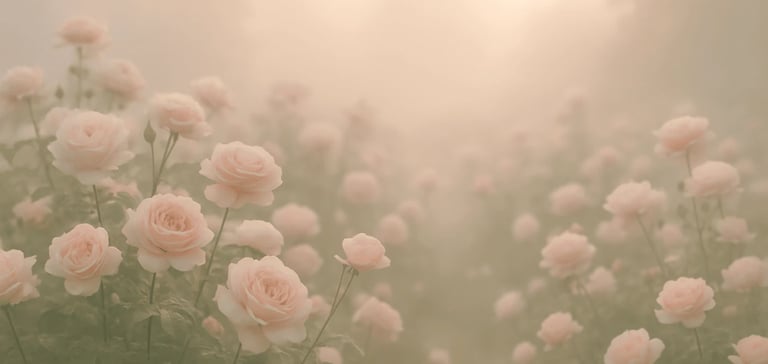The Rose: Queen of Gardens, Messenger of the Soul
LES PLANTES


Common Name and Scientific Name
We simply call it the rose, as if it were self-evident. Its Latin name, Rosa, conceals a vast and passionate family — the Rosaceae — which includes more than 200 wild species and thousands of varieties shaped by human hands.
Since the dawn of time, the rose has unfurled its petals in our hearts as well as in our poems.
Portrait of the Rose: Beauty Armed with Softness
A flower of contrasts, the rose combines the delicacy of its velvety petals with the harshness of its thorns — silent guardians of its grace. Whether bushy, climbing, or miniature, it comes in an infinite array of forms: simple or lush, airy or fragrant, vibrant or pastel.
It sometimes stands tall and proud, sometimes discreet and modest, yet always with that timeless presence that has fascinated humankind since Antiquity.
Colors and Scents: A Palette of Emotions
White like a promise, red like a heartbeat, pink like a tender memory, yellow like a child’s laughter… The rose speaks every language of the soul. Some exhale a heady fragrance reminiscent of Oriental gardens; others release a subtle fruity or citrusy note, light and ethereal.
Each color, each shade, has its breath — its secret voice.
Where and How to Grow It
The rose loves sunlight and gentle care. It thrives in rich, well-drained soil, preferably slightly clayey or loamy, and requires at least 5 to 6 hours of light per day. The best time to plant it is in autumn or early spring, when the earth is cool and welcoming.
It can flourish in open ground, bringing romance to a garden, or settle in a pot on a balcony or terrace — as long as it is given depth and consistency.
Blooming Season: A Dance of Beauty
From May to October, the rose dances to the rhythm of the seasons. Some varieties bloom several times; others offer a single burst of beauty — brief, yet unforgettable.
Every bloom is an ephemeral promise, a gentle reminder of life’s cycles.
A Universal Traveller
Native to Europe, Asia, North Africa, and North America, the rose has conquered every continent. Today it is cultivated wherever the climate allows — in fields, greenhouses, city balconies, and along wild mountainsides.
A true citizen of the world, rooted in countless traditions and cultures.
A Flower to Savor
Yes, roses are edible — as long as they are grown without pesticides. Their petals are used in jams, syrups, teas, pastries, and aromatic waters. Rosa damascena and Rosa gallica are among the most prized for these culinary delights.
Their fruits, rose hips, are bright red pearls rich in vitamin C, delicious in infusions or jellies.
Friend to Gardens and Wildlife
Roses harm neither soil nor animals. Their thorns may deter herbivores, but they are neither toxic nor invasive. They coexist peacefully within ecosystems and attract bees, butterflies, and birds, offering nectar and shelter to winged visitors.
Symbolism and Secret Language
Roses are deeply linked to human emotion — from romantic love to friendship, compassion, and respect. Each color carries a unique message, making roses a cherished way to express heartfelt sentiments. Red roses are traditionally symbols of passionate love, while white roses evoke purity and innocence.
This floral language has played a significant role in the rose’s long-lasting popularity, especially during special occasions such as weddings, anniversaries, and times of remembrance.
____________________________________________
What if a piece of jewelry or a decorative object could capture the very essence of a rose? A timeless way to savor its poetry — even without tasting it.
French craftsmanship
Copyright©2025 Créa'Bohème
